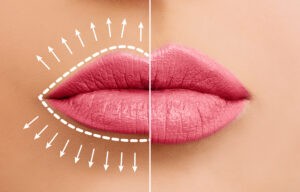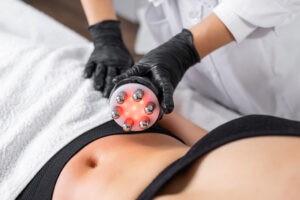
Among the various types of dermal fillers available, Juvederm and Restylane stand out as two of the leading choices. Both are based on hyaluronic acid, a substance naturally found in the body that helps maintain skin hydration and volume. This article explores the safety and effectiveness of using Juvederm and Restylane in the same treatment, providing insights into each product.
Understanding Juvederm
Composition and Properties
Juvederm is primarily composed of a smooth gel that contains hyaluronic acid. This gel formulation allows for easy injection, leading to a more comfortable experience for patients. The hyaluronic acid in Juvederm acts as a cushioning agent, drawing moisture into the skin. This contributes to the overall plumpness and smoothness of the treated areas.
Common Uses
Juvederm is commonly used for enhancing the lips, smoothing out nasolabial folds (the lines running from the nose to the corners of the mouth), and restoring facial volume that may have diminished over time. For example, if someone wants fuller lips, Juvederm can provide a natural-looking enhancement that lasts several months. Similarly, for individuals who have noticed sagging skin around the mouth, Juvederm can help restore a more youthful contour.
Product Range
Juvederm offers a range of products tailored to different treatment areas and concerns. For instance, Juvederm Ultra is often chosen for lip enhancement because it provides a soft, natural appearance. On the other hand, Juvederm Voluma is designed specifically for adding volume to the cheeks, while Juvederm Volbella is lighter and ideal for fine lines around the mouth. Each product is formulated to meet different aesthetic goals, making Juvederm a versatile option for cosmetic treatments.
Understanding Restylane
Composition and Properties
Restylane is also a hyaluronic acid-based filler, but it features a firmer gel texture compared to Juvederm. This firmer consistency allows Restylane to provide more structure and support in certain areas. It effectively fills in lines and hollows while maintaining a natural look. The choice between Juvederm and Restylane often comes down to the specific area being treated and the desired outcome.
Common Uses
Restylane is commonly used to treat fine lines, under-eye hollows, and to augment the lips. For example, individuals looking to smooth out fine lines around their mouth can benefit from Restylane’s firmer gel, which can fill in those lines effectively. Additionally, for those who feel their under-eye area looks too hollow or tired, Restylane can be injected to create a more refreshed and youthful appearance.
Product Range
Similar to Juvederm, Restylane offers a variety of products designed to address specific concerns. Restylane Silk is particularly popular for lip augmentation and smoothing out fine lines, while Restylane Lyft is designed for volume loss in the cheeks and hands. Restylane Defyne is another option that helps maintain facial dynamics and provides support for natural expressions. With these choices, Restylane gives patients the ability to select a product that aligns perfectly with their needs.
Is It Safe and Effective to Use Both Juvederm and Restylane?
When considering the combination of Juvederm and Restylane in the same treatment, it’s essential to understand that both products are made of hyaluronic acid, but they differ in texture and intended use. This raises an important question: Is it safe to mix these two different fillers?
In many cases, healthcare professionals have found it safe to use both Juvederm and Restylane together, provided they are injected in appropriate areas. For instance, a practitioner might use Juvederm to enhance the lips while using Restylane to address fine lines around the mouth. This combination allows for a more comprehensive approach to facial aesthetics. However, it is crucial to consult with a qualified professional who can assess individual needs and create a tailored treatment plan.
The effectiveness of using both fillers often depends on the practitioner’s experience and understanding of facial anatomy. A skilled injector can enhance the results by choosing the right filler for each specific concern. Additionally, because both products include hyaluronic acid, there is less risk of an allergic reaction, making them relatively safe options for patients.
Before proceeding with a treatment that involves both Juvederm and Restylane, patients should discuss their expectations and medical history with their practitioner. Understanding what to expect during and after the procedure is important for ensuring a positive experience. A good practitioner will take the time to explain the differences between the fillers and the reasoning behind using both during the treatment.
Lastly, it’s essential for patients to follow aftercare instructions provided by their healthcare provider. Proper aftercare can help maximize the results and minimize any potential side effects. Following simple guidelines, such as avoiding straining or excessive sun exposure for a few days, can make a significant difference.
Ultimately, understanding the properties, uses, and product ranges of both Juvederm and Restylane equips individuals with the knowledge to make informed decisions about their cosmetic treatments. As the popularity of dermal fillers continues to rise, the combination of these two fillers offers exciting possibilities for those looking to enhance their appearance safely and effectively.
Using Juvederm and Restylane Together
When considering cosmetic procedures to enhance facial features, many people look into dermal fillers. Two of the most popular options are Juvederm and Restylane. These fillers are made from hyaluronic acid, a substance that naturally occurs in the body. Because they share this common ingredient, they are generally considered compatible and safe to use together. This compatibility allows practitioners to blend these two products seamlessly to cater to an individual’s specific needs.
One of the significant advantages of combining Juvederm and Restylane is the ability to customize treatment. Each filler has its unique properties, which make them suited for different areas of the face. For instance, Juvederm is often used for creating smoother volume in areas like the cheeks, while Restylane can be more effective in enhancing contours around the lips. By skillfully using both fillers, a practitioner can enhance various features while ensuring that they blend aesthetically. This tailored approach can lead to more natural results, helping individuals achieve their desired look.
Expert practitioners employ specific techniques to maximize the effectiveness of using both fillers. They understand the ideal areas to apply each product based on individual facial structures and skin types. For example, a skilled injector might choose to use Juvederm in the mid-face for its lifting properties, while applying Restylane in the nasal labial folds due to its thicker consistency. The strategic use of both products can create a balanced and harmonious appearance. Moreover, practitioners keep in mind the importance of precise dosage and application techniques to avoid complications and achieve optimal results.
Considerations and Safety
Before undergoing any cosmetic procedure, it is crucial to have a thorough consultation with a qualified injector. This step is not just a formality; it allows for a complete evaluation of individual needs and skin types. During the consultation, potential patients can discuss their goals and concerns. Practitioners will assess facial anatomy and determine the most suitable treatment plan. This personalized assessment is key to achieving desired results safely.
While combining Juvederm and Restylane can be beneficial, it also carries potential risks. Understanding these risks is vital for anyone considering treatment. Some common side effects may include swelling, bruising, or slight discomfort at the injection sites. Practitioners will typically provide advice on how to minimize these effects, such as avoiding certain medications before the procedure or applying ice to the treated areas afterward. Being informed about potential risks can prepare individuals for what to expect and how to handle any minor side effects.
Aftercare is another critical aspect of ensuring the safety and effectiveness of the treatments. Following the procedure, patients should adhere to guidelines provided by their injector. This might include avoiding strenuous activities, staying out of direct sunlight, and applying recommended ointments to keep the skin calm. Proper aftercare can significantly reduce the risk of complications and enhance overall results. Practitioners should explain these aftercare instructions clearly, so patients feel comfortable and confident following the procedure.
Lastly, it is essential to remember the significance of seeking care from experienced professionals. While many clinics offer these services, not all practitioners possess the same level of expertise. Researching a practitioner’s background, reading reviews, and asking for recommendations can ensure that individuals receive the safest and most effective care possible. A knowledgeable injector will not only be skilled in using both Juvederm and Restylane but will also create a treatment plan tailored to individual needs, ensuring that each person’s experience is as positive as possible.
